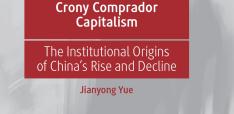The G7 and Global Development Architecture: Gradual shift or pivotal moment?

In late 2025 the development cooperation architecture or system is being openly renegotiated rather than quietly adjusted. Will it be a gradual shift or will 2025 be seen in the future as a pivot moment or a tipping point?
The global development architecture is under the spotlight. This refers to the broad architecture of actors, norms, instruments and institutions that mobilise and coordinate resources, knowledge and political support for development goals. Within this system, ODA is a core financial instrument, primarily provided by OECD (Organisation for Economic Co-operation and Development) DAC (Development Assistance Committee) members, and functioning alongside other modalities such as South–South cooperation, climate finance, philanthropic aid and private-sector engagement.
The recent G7 Development Ministers’ Chair’s Summary is unusually explicit on the future of the global development architecture: ministers call for reform of the “international aid architecture” to “reduce fragmentation and enhance coherence, effectiveness and impact,” and stress that reform must “go beyond cost-cutting” to include “targeted structural realignment, mandate streamlining, and enhanced efficiency.” This is not technical language. It sounds like a political signal that the G7 intends to reshape how development cooperation is organised, coordinated and justified.
At the same time, that same text reveals tension inside the G7 on what the system is even for. If the chair is summarizing the debate of a meeting, it suggests that there is no broad consensus. The language of the statement also seems to closely reflect the expectations of the Trump administration. This is not the language used to strengthen a policy field. It is the language used to undermine it.
Parts of the chairs summary frame development as an instrument to “boost shared prosperity” through supply chains, critical minerals, energy systems, value-added manufacturing and infrastructure partnerships with countries such as Indonesia, Peru and South Africa.
So, the tone is industrial policy and geoeconomics: build domestic processing capacity, formalise artisanal mining, keep more value in producer countries, but also secure access to critical inputs for G7 economies.
The chair’s summary also highlights new vehicles like the G7 Infrastructure Investment Council, designed to link G7 development finance institutions and large institutional investors to infrastructure opportunities in low- and middle-income countries, and presents this as part of system reform. In other words, “architecture reform” is being tied to crowding in private capital at scale, not primarily to replenishing grant aid.
If you look for confirmation that “sustainable development” remains an ambition of the G7 ministers responsible for development, you may be surprised to find that the term appears only three times and in rather different contexts. And if you expect that development ministers would emphasize ODA as an important instrument, you will discover that “some ministers highlighted themes such as … the value of official development assistance in responding effectively to global challenges.” A positive interpretation might be that at least not all development ministers are denying the value of ODA. Such is the reality of a meeting of development ministers in the autumn of 2025.
At the multilateral level the same document commits to engaging in institutional reform. It talks about reducing fragmentation, improving coherence, and streamlining mandates across the system. Yet the United States position under Trump pushes in a tougher direction. The Trump administration’s stated line is that multilateral institutions should narrow to “core mandates,” strip out climate and gender agendas, and submit to political oversight, while large cuts are made to UN agencies, UNICEF, UNFPA, and UN peacekeeping, and USAID functions are folded into the State Department.
This is the “New Washington Dissensus” and it treats cooperation as a transactional instrument of national interest, ties assistance to migration control and ideological alignment, and questions the legitimacy of solidarity as a guiding norm.
Outside the G7, other actors are also proposing to rewire the system. The Financing for Development conference in Seville in mid-2025 advanced the idea of country platforms: nationally led coordination hubs that bundle debt relief, climate finance and investment around a country’s own strategy, and that are meant to replace donor-driven project silos. This is presented as a structural answer to fragmentation and as a claim to agenda-setting authority by governments in the Global South.
So, will change be gradual or will 2025 be seen as a pivotal moment in the future?
We believe the system is at a normative tipping point rather than facing a simple cyclical budget squeeze. We have discussed elsewhere four competing visions already visible in 2025, each vying for dominance. It is not yet clear how the coming months and years will unfold in this respect.
However, we should keep in mind that the Trump administration is not merely ignorant of the global sustainable development discourse. Rather, it appears to be pursuing a deliberately aggressive approach aimed at silencing such voices. The recent G7 document provides a clear illustration of this trend.
Those actors — governments, parliaments, and non-state actors — who support what until recently was a broad global consensus on sustainable development need to find ways to counter the destructive influence of the Trump administration on established forums such as the G7 and G20, and beyond. It seems increasingly necessary for like-minded actors to organize themselves more flexibly and proactively, making use of Track 2 opportunities to accelerate dialogue in this rapidly changing context. It would be dangerous to underestimate the risks the world is currently facing across many areas, including global sustainable development. And if you’re in any doubt - here’s a taster of what contemporary diplomacy related to climate change looks like in 2025.
Stephan Klingebiel heads the research program “Inter- and Transnational Cooperation” at the German Institute of Development and Sustainability (IDOS). He previously led the UNDP Global Policy Centre in Seoul (2019–2021) and the KfW Development Bank’s office in Kigali, Rwanda (2007–2011). He is also a guest professor at the University of Turin (Italy), a senior lecturer at the University of Bonn, and an Honorary Distinguished Fellow at Jindal University (India).
Andy Sumner is Professor of International Development at King’s College, London, and President of European Association of Development Research and Training Institutes (EADI). He is a Fellow of the Academy of Social Sciences and the Royal Society of Arts; a Visiting Professor at the Centre for Economics and Development Studies at Padjadjaran University, Indonesia; and Senior Non-Resident Research Fellow at the United Nations University, WIDER, Helsinki and the Center for Global Development, Washington DC.
Photo by Atlantic Ambience


